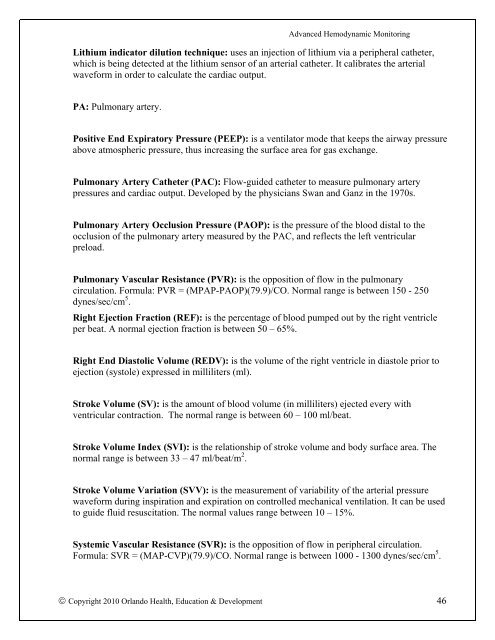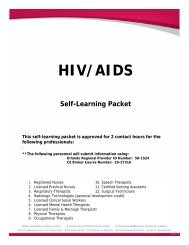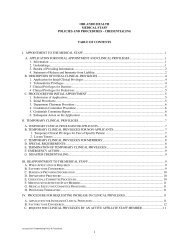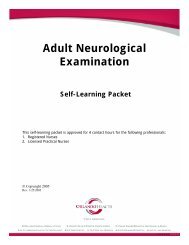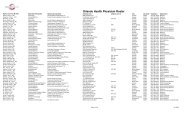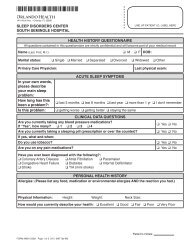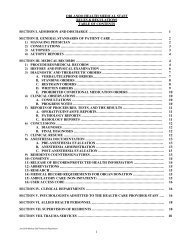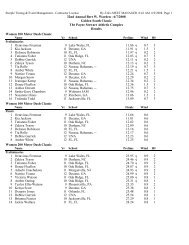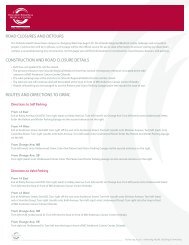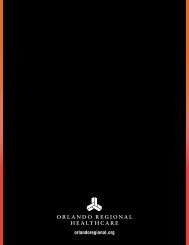Advanced Hemodynamics - Orlando Health
Advanced Hemodynamics - Orlando Health
Advanced Hemodynamics - Orlando Health
You also want an ePaper? Increase the reach of your titles
YUMPU automatically turns print PDFs into web optimized ePapers that Google loves.
<strong>Advanced</strong> Hemodynamic Monitoring<br />
Lithium indicator dilution technique: uses an injection of lithium via a peripheral catheter,<br />
which is being detected at the lithium sensor of an arterial catheter. It calibrates the arterial<br />
waveform in order to calculate the cardiac output.<br />
PA: Pulmonary artery.<br />
Positive End Expiratory Pressure (PEEP): is a ventilator mode that keeps the airway pressure<br />
above atmospheric pressure, thus increasing the surface area for gas exchange.<br />
Pulmonary Artery Catheter (PAC): Flow-guided catheter to measure pulmonary artery<br />
pressures and cardiac output. Developed by the physicians Swan and Ganz in the 1970s.<br />
Pulmonary Artery Occlusion Pressure (PAOP): is the pressure of the blood distal to the<br />
occlusion of the pulmonary artery measured by the PAC, and reflects the left ventricular<br />
preload.<br />
Pulmonary Vascular Resistance (PVR): is the opposition of flow in the pulmonary<br />
circulation. Formula: PVR = (MPAP-PAOP)(79.9)/CO. Normal range is between 150 - 250<br />
dynes/sec/cm 5 .<br />
Right Ejection Fraction (REF): is the percentage of blood pumped out by the right ventricle<br />
per beat. A normal ejection fraction is between 50 – 65%.<br />
Right End Diastolic Volume (REDV): is the volume of the right ventricle in diastole prior to<br />
ejection (systole) expressed in milliliters (ml).<br />
Stroke Volume (SV): is the amount of blood volume (in milliliters) ejected every with<br />
ventricular contraction. The normal range is between 60 – 100 ml/beat.<br />
Stroke Volume Index (SVI): is the relationship of stroke volume and body surface area. The<br />
normal range is between 33 – 47 ml/beat/m 2 .<br />
Stroke Volume Variation (SVV): is the measurement of variability of the arterial pressure<br />
waveform during inspiration and expiration on controlled mechanical ventilation. It can be used<br />
to guide fluid resuscitation. The normal values range between 10 – 15%.<br />
Systemic Vascular Resistance (SVR): is the opposition of flow in peripheral circulation.<br />
Formula: SVR = (MAP-CVP)(79.9)/CO. Normal range is between 1000 - 1300 dynes/sec/cm 5 .<br />
Copyright 2010 <strong>Orlando</strong> <strong>Health</strong>, Education & Development 46


